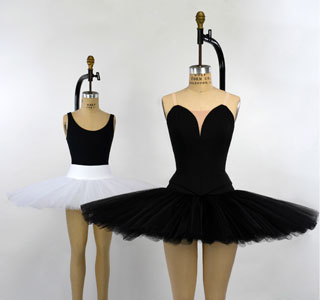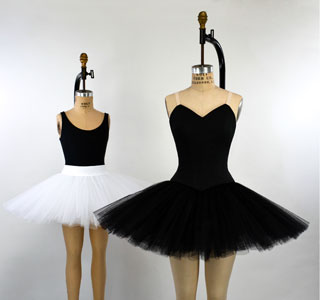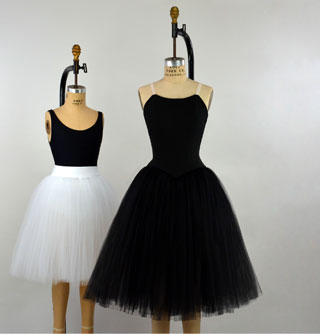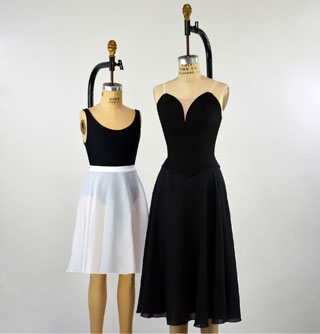The Unspoken Language of a Ballet Tutu or Skirt
22nd Mar 2015
Deciding on which tutu or skirt is needed for a particular performance or rehearsal really depends on what needs to be said - or not said but rather seen and felt.
THE TRADITIONAL CLASSICAL TUTU

The most iconic, elegant shape for a classical ballet.
When a classical tutu is hooped it becomes a rigid, firm platter, perfect for showing off strong, quick, complicated leg movements.
Unhooped, it will fall slightly and have more bounce, still the traditional silhouette but more responsive to the dancer.
THE EURO-STYLE CLASSICAL TUTU

A soft, bell-shaped silhouette to the classical tutu.
This tutu shares many of the same characteristics of the traditional classical tutu above but sits higher on the hips giving the dancer a shorter torso and longer skirt look.
Reminiscent of an older, 19th century aesthetic but still allowing for full leg movement.
THE TRADITIONAL ROMANTIC TUTU

The origins of the tutu begin with the romantic tutu.
Made of soft tulle, that when dancing floats, creating an ethereal, haunting echo of the dancers movements.
This is why it is always the obvious choice for Sylphs, Wilis and any form of dreamy, haunting Fairy.
THE SOFT GEORGETTE SKIRT

The semi-sheer, soft nature of georgette make it a perfect skirt that can work for neo-classical thru to contemporary ballets.
Georgette has a quicker response to dancers movements than tulle. Flowing around a dancers legs like quicksilver.


